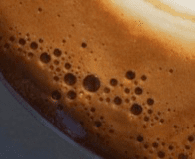I am down on sleep and have penned a rather personal post, because right now, on the back of some outstanding conversations with some truly impressive newly ‘graduating’ Anaesthetic and Pain Medicine fellows*, it seems an important reflection to share.
Yesterday I caught up with my good mate Jono. Conversation with Jono is always rewarding. He is a deep thinker; authentic, intentional and observant. As our chatter meandered along a typically unpredictable course, we came across the mutual observation that Reductionism and The Big Picture are often mutually exclusive ‘positions’. Both are vocal contributors in ‘the pain space’. Big Picture people seem very at home with concepts such as ‘connection’. They place great value on what they feel and they resist (or despise!) the idea of taking away the magic (or perhaps their own ‘gift’) by reducing such things to biological events or, worse still, to physics. They are convinced that there is more to us than that which will ever be explained. Other people are Reductionists. They scoff at the Big Picture folk for their naivety and longing for ‘magic’. Reductionists might want ‘evidence’ and live in a world defined by ‘linearity’ and ‘proof’.
Reflecting on this stuff left me wondering if I am a Reductionistic Big Picture Guy, or perhaps a Big Picture Reductionist. It reminded me of a story my dad told me once (probably not his, but attributing it to him gives me a good feeling):
An arctic hunter is stuck at home in his snug igloo getting very hungry. He desperately doesn’t want to get in his boat to go fishing because he suffers terribly from the cold. One night he has a brainwave – to build a fire in his boat so he can stay warm as he catches his food. The next morning, he sets off, warm as toast, fire burning brightly. Alas, however, his boat catches alight and he drowns. The moral of the story is that you can’t have your kayak and heat it too.
Is this the case in the pain field? Can we get equally excited about The Big Picture AND the biological, or perhaps even better, the physics, that underpins it? I reckon we can.
Some time ago I set out to capture this in visual form. I began taking photos of coffees. For me, a coffee is a ‘whole person event’. I love the noise of a café. I love the smells. I love looking up at a Loud Laugher, seeing the connection they are making, in real time, with another. Or the stern face of Ms Conviction seeking a fissure in the skeptical face of Mr Uncertainty. I also place great value on the connections that I make with others over a coffee.
I love the look of a great coffee. Check out the bubbles in this perfect crema:

Making the picture bigger, one can see that the barrista has taken great care to give me a visually satisfying coffee – Charles Spence has shown us all the power of cross-modal modulation of sensation (check out Charlie’s great new book here) and I am very happy to accept that the barrista’s efforts make my coffee taste better (note to young players – I do NOT mean “make me think my coffee tastes better even though it doesn’t”).
For my Coffee project, I wanted to capture both ends of the Reductionist – Big Picture thing. I wanted to go big enough that one doesn’t even notice the magic unless one steps back a bit. So I collected these photos for three years – 3000 coffees (not all consumed by me….). Then I put them together in a way that captured what is for me, the very best of Big Pictures:

This image is made up of 3136 of my coffee pictures. Each one with a story and with inherent meaning; each one capturing an epoch in which my biology changed forever. To you, it will be a poor resolution image of a couple of kids. To me, it is meaning, within meaning, within meaning. It’s my kids. They are on a ferry. They are laughing. They are beautiful. I love them (NB fascination trigger: what IS this thing called love?!) I am immediately transported to that moment – and to that kind of moment – when The Big Picture resonates so powerfully that it stops you in your tracks and feels fabulous (or terrifying perhaps) – it is full of loveliness or connection to something bigger. How can I do this? What remarkable biological cascade triggers that gloriousness?!
Back to pain stuff – this is relief.news after all. If you are a Reductionist, or a Big Picture Person, and you distrust or despise the other, I reckon you might be missing out on half of the magic. Pain is, in my view, a feeling. Feelings are, in my view, amazing – gobsmackingly compelling. However, from what I can understand of The Human, feelings are outputs into consciousness of a complex system that, ultimately, is just biological interactions or, even better, just physics. Isn’t that remarkable?! And isn’t there magic in that simplicity?! I love that the production of consciousness remains a mystery despite the enormous collective IQ working on it, but perhaps, one day, we will describe it in terms of physics.
I feel very fortunate – and I think I am very fortunate – that the magnificence of how feelings feel does not suffer from the remarkable extent to which they can be reduced to microscopic, soulless, impersonal and formulaic events.
Just a thought.
* Footnote to first paragraph: This seemed off point in this post, but not to be forgotten: I had the chance last night to listen to the biographies of the award winners at the Australia New Zealand College of Anesthetists (ANZCA) and Faculty of Pain Medicine (FPM) Awards ceremony. It struck me how lucky our species is to have the occasional individual who really does change their world for good. ANZCA recognized a few such individuals and by crikey they are worth recognizing. So I tip my lid to the late Prof Tess Crammond, to Dr Meredith Craigie, to Prof Alan Merry, Prof David Story and to Prof Stephan Schug. All received very prestigious awards. I marvel at the capacity and commitment to the field of these outstanding doctors and I wanted to publically thank them for their massive contributions.
About Lorimer Moseley
 Lorimer is Foundation Chair in Physiotherapy and Professor of Clinical Neurosciences at the University of South Australia, and Senior Principal Research Fellow at Neuroscience Research Australia. He has published 300 scholarly works. His H-index is 59. He leads the Body in Mind Research Group, which investigates the role of the brain and mind in chronic pain. For full bio, go here.
Lorimer is Foundation Chair in Physiotherapy and Professor of Clinical Neurosciences at the University of South Australia, and Senior Principal Research Fellow at Neuroscience Research Australia. He has published 300 scholarly works. His H-index is 59. He leads the Body in Mind Research Group, which investigates the role of the brain and mind in chronic pain. For full bio, go here.



